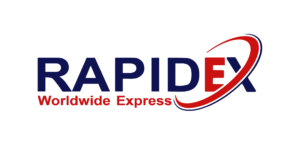tl;dr: AI is revolutionizing compliance by helping businesses stay up-to-date with regulations, reduce audit stress, manage documents smartly, detect risks early, and train staff more effectively. As regulatory pressure increases in 2025, adopting AI in compliance is no longer optional it’s a necessity.
How AI Is Transforming Key Areas of Compliance in 2025
Compliance isn’t just about following rules anymore. In today’s fast-moving world full of changing regulations, businesses, especially in areas like pharma, finance, healthcare, and manufacturing, need quicker and smarter ways to stay compliant. That’s where artificial intelligence (AI) comes in. AI is changing how companies spot risks, keep up with rules, prepare for audits, and avoid fines or damage to their reputation.
1. Regulatory Monitoring and Change Management
Regulations are constantly evolving across regions and industries. Manually keeping up with every update is nearly impossible. AI can monitor thousands of data sources, including regulatory bodies like the FDA, EMA, or SEC, and alert teams about new or updated rules in real time. For example, an AI tool can detect changes in FDA guidelines and send instant summaries to the quality or compliance teams. This ensures companies adapt quickly and remain compliant before inspections or audits hit.
🔹 Stat for 2025: According to Deloitte’s 2025 Compliance Tech Report, companies using AI for regulatory tracking saw a 60% faster response time to new rule changes compared to those relying on manual tracking.
2. Risk Assessment and Predictive Analysis
AI can analyze vast datasets to spot hidden risks that humans might miss. It evaluates patterns in audit trails, customer behavior, financial transactions, or supplier data and highlights anomalies that could lead to non-compliance or fraud. For instance, AI in banking compliance can flag suspicious transactions instantly, helping prevent money laundering or other financial crimes. In pharma, it can predict batch failures or manufacturing deviations.
🔹 Stat for 2025: 72% of risk and compliance leaders say AI tools helped them detect regulatory risks earlier, according to PwC’s 2025 Risk Insights Report.
3. Document Management and Smart Search
Think of all the SOPs, quality manuals, training logs, CAPA reports, and regulatory filings that large organizations manage. AI makes it easier to sort, search, and retrieve these documents by understanding the context and meaning of keywords, not just matching text. Natural language processing (NLP), a branch of AI, allows compliance officers to ask questions like, “Show me all documents related to FDA Form 483 in the last two years,” and get immediate, accurate results.
5. Training and Policy Compliance
AI can personalize compliance training based on an employee’s role, performance history, or department. Instead of generic training sessions, employees receive AI-curated modules with real-life scenarios relevant to their tasks. AI also checks whether internal policies are being followed across teams scanning emails, chat logs, reports, or system logs and flags anything unusual.
6. Third-Party Risk Management
Suppliers, vendors, and partners can create compliance risks if they don’t follow regulations. AI helps screen and continuously monitor third-party activity using public data, legal records, certifications, and even social media to assess potential risks. This is especially useful in pharma, where outsourcing to contract manufacturers is common. AI ensures these partners comply with GMP, GCP, or ISO standards.
7. Reporting and Regulatory Filings
AI helps automate and verify filings like SARs (Suspicious Activity Reports), EIRs (Establishment Inspection Reports), or adverse event reports. It ensures correct data formatting, removes duplication, and cross-checks entries for accuracy before submission. This reduces errors and helps meet submission deadlines without stress.
Why Is AI Becoming Essential in Compliance?
- Speed: AI processes data in seconds that would take teams weeks.
- Accuracy: Fewer human errors, more consistent reporting.
- Scalability: One tool can monitor multiple jurisdictions, regulations, and departments.
- Cost-effectiveness: Less need for manual reviews or regulatory consultants.
- Proactiveness: AI spots issues before they become violations.
Real-World Example A pharmaceutical company using Atlas Compliance’s AI platform saw a 40% drop in Form 483 observations within one year by identifying process gaps early and correcting them proactively.
Most Frequently Asked Questions (FAQs)
Q1: Can AI completely replace compliance officers?
No. AI supports and enhances their work but doesn’t replace human judgment, especially in interpreting complex regulations or making strategic decisions.
Q2: Is AI suitable only for large companies?
Not at all. Many AI tools are now affordable and scalable, making them accessible even to small and mid-sized businesses.
Q3: Are AI tools in compliance safe from data breaches?
Yes, if proper security protocols like encryption, access control, and regular audits are followed. Always choose trusted vendors.
Q4: What are the risks of using AI in compliance?
Over-reliance on AI without human review can lead to blind spots. Also, poor data quality or biased training data can skew results.
Q5: Which industries benefit most from AI in compliance?
Highly regulated sectors like pharmaceuticals, finance, healthcare, insurance, and manufacturing see the greatest impact.
Q6: How does Atlas Compliance help with AI in regulatory compliance?
Atlas Compliance uses AI to monitor global regulatory updates in real time, analyze compliance trends, and flag potential risks before they turn into violations. It also provides access to a large database of Form 483s, EIRs, and warning letters, helping companies benchmark their compliance performance and stay audit-ready.
Q7: Is Atlas Compliance suitable for small or mid-sized pharma companies?
Yes. Atlas Compliance is designed to be scalable and user-friendly, making it ideal for both large enterprises and smaller pharma companies. It reduces manual work, simplifies regulatory tracking, and provides actionable insights without the need for a large compliance team.
- How AI Improves Compliance: Key Areas, Benefits & 2025 Trends
- Discover how AI is transforming compliance in 2025—covering key areas like risk management, audits, regulatory tracking, and more.
- AI in compliance,
Related posts:
No related posts.



